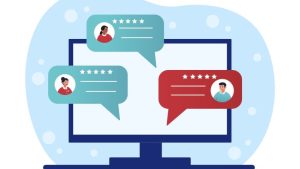Gamifying The Job Hunt: Turning the Search for Work into a Fun Challenge
 Publié le 21 July 2023
Publié le 21 July 2023
Try new approaches to recruitment by gamifying the job hunt to help find the best candidates for any available job role.
Recruitment can be difficult even in the best of times. That’s why many recruiters don’t just post long, time-consuming job profiles and expect candidates to complete applications without incentives. These days, many of the smartest recruiters gamifying the job hunt to maximize their recruitment results.
Indeed, gamifying your job hunt could see you attract many more quality job candidates in a shorter amount of time. Let’s take a closer look at what gamification is, why it’s so effective, and how you can implement it into your recruitment efforts ASAP.
What is Gamification in Recruiting?
In a nutshell, gamification is the art – and science – of incorporating different elements and games into an existing system. For example, if you’re struggling to drive employee engagement at the office, you might use gamification to get people involved with workplace activities and engage in a little friendly competition to earn prizes and perks.
You can use gamification in recruiting as well. For example, you might start using a few gamification features to attract new job candidates or as the initial hurdles that prospective job applicants have to cross to submit a resume. In any case, recruitment gamification introduces fun and some job-training elements into the recruitment process. It can provide numerous major benefits to your organization.
The Benefits of Job Recruitment Gamification
There are lots of benefits to gamifying your job recruitment process, no matter the size of your business or its industry. For example:
- Gamification makes learning much more fun and engaging for job applicants and those in the middle of your onboarding process. For example, it’s well-known that gamification increases engagement in children and adults alike, as it gives the brain something to focus on aside from rote processes or boring procedures. In other words, gamification gets people invested in the content they need to complete.
- Gamification can also decrease employee and job candidate stress. As a result, this can increase the number of prospective job candidates who complete your application process, plus boost the number of excellent candidates who reach the interview stage. This, in turn, gives your HR department many more quality candidates to work with to ensure each position is filled with the best person possible.
- Gamification sets a good tone for your future relationship with a new employee going forward. According to certain surveys, 4 out of 5 employees stated that gamification makes them much happier and more productive at work. If you start an employee’s time at your company with a game, they’ll be more likely to enjoy their time at your business, resulting in greater employee loyalty and productivity.
- Don’t forget that gamification can be especially interesting and enjoyable for younger employees. If you are looking to attract younger candidates from Generation Z, for instance, gamification is a great strategy, especially if you are competing with organizations looking to poach candidates from the same general workforce pool.
Why Does Gamification Work So Well?
Simply put, gamification works so well because it makes a job application or onboarding process more interesting and engaging from the get-go. When the human brain has something to focus on – especially something it finds fun, even to a very slight extent – it’s more likely to give that task more effort and achieve better results.
Nothing is more stifling to a candidate’s job search than boredom. Unfortunately, lots of job seekers find that their job hunts are increasingly boring and rote. They fill out repeated applications, post the same resume and cover letter to the same job boards over and over again. They do all of this without necessarily hearing back from recruiters. That can do a lot to dissuade any candidate from applying to your company.
When you use candidate games and other gamifying strategies, you’ll make your brand stand out from the competition. All of a sudden, candidates will be excited to apply to your job as opposed to another in the same industry. Given long enough, this could increase the quality and size of your workforce.
How to Use Gamification in Your Recruiting Efforts
The above benefits will only be accessible to your business if you actively use gamification, of course. To that end, there are several smart strategies you can leverage to employ gamification in your recruitment efforts.
Replace Cover Letters with Games
First, consider replacing cover letter requirements with games instead. Many job applications ask job hunters for cover letters by default. But how many of your recruitment staff read those cover letters? In a lot of cases, the odds are the cover letters are just filters or extra steps to prevent lazy candidates from getting further down the recruitment process than they should.
If that’s the case for your business as well, you can replace cover letters with games instead. Have prospective job candidates complete a basic game to show that they are truly interested in the opportunity. Not only does this serve the same purpose as a filtering cover letter, but it also makes the recruitment process for your company interesting from the get-go.
Who knows? Quality job candidates may be even more interested in continuing to apply to your company and completing the recruitment process if they encounter a game instead of a cover letter requirement.
Offer Simulation Assessments to Determine Candidate Skills
As you attract candidates to open positions, you’ll need to determine their skills.Gamifying the job hunt can help you do just that.
Simulation assessments roughly simulate the work environment or responsibilities of certain positions. As an example, some hotels use games to demonstrate the average day-to-day responsibilities and workflows of hotel managers and similar professionals.
This is a great way to figure out whether one candidate or another has the basic skills necessary to fill a position or get the job done. Say you are trying to hire someone for an accounting position. Rather than simply asking a potential accountant if they have the right skills, gamify the process by having them solve accounting problems or balance books in a game-like interface.
Again, this approach can make the recruitment process much more fun for your job seekers. It’ll also give you a better, more accurate picture of a potential candidate’s skills. A would-be accountant who can’t complete a basic accounting game probably isn’t a good fit for your business, after all.
Post Leaderboards to Inspire Friendly Competition
Some jobs are very popular and have a lot of candidates competing for them. For instance, physician assistant, nurse practitioner, and information security analyst are among the most in-demand jobs. For these positions, you should consider posting leaderboards to inspire a bit of friendly competition. While not a recruitment game per se, leaderboards feel game-like in that they incentivize candidates to do as well as they can and answer questions as effectively as possible.
Leaderboards can make the pursuit of an open position – especially one with great pay and stellar perks – fun for everyone. Note that you don’t only need to use leaderboards for open positions; you can incorporate them in your day-to-day office activities to inspire your employees to compete with each other (in a friendly way, of course).
Use Puzzles or Riddles to Attract New Candidates
What about attracting top-tier candidates in the first place? When it comes to getting the best job hunters for your brand, you can use candidate games to attract them more easily.
More specifically, use puzzles or riddles to announce open positions and to draw people to your business. For example, if you are looking to fill a management position, have prospective job seekers answer a riddle in their cover letter or send the riddle answer to your recruitment staff. In this way, you’ll know that they read and solved the riddle before continuing down the recruitment process with them.
That’s a clear benefit for your business, but puzzles and riddles are also fun for new candidates. In a lot of cases, the smartest, most go-getter candidates will be attracted to businesses that have a unique or quirky corporate personality. If you announce a new job opening via a riddle or puzzle, they’ll be more interested in your brand as opposed to a competing organization.
Incorporate a Rewards System into the Onboarding Process
Let’s face it; most business onboarding processes are boring and take a long time to complete. You can make this better for your new hires or job candidates by incorporating a rewards system into the process from start to finish.
For example, draw up a new onboarding process or use a platform that incorporates an onboarding game and points system for new hires learning the ropes. Each time a candidate completes a training module or completes a core task, like meeting with a supervisor or setting up their desk, they earn a certain number of points.
They can then use those points from the onboarding game and “redeem” them for fun perks and rewards. It’s a small touch, but it can do a lot to help employees stay engaged and excited throughout onboarding, which is traditionally a time when many employees lose their initial enthusiasm after being hired by a company. This is an important step to remember when hiring a new employee.
Don’t Forget to Continue Using Gamification After Hiring
There’s one last bonus tip before you move on: don’t stop gamifying the workplace after the initial hiring process. Remember, gamification of your recruitment process will cause job seekers to develop expectations of your company. If you have a lot of games and a fun procedure at the beginning, but the day-to-day in the office is boring, new employees may quickly feel disillusioned with your organization.
If that happens, they could look for a different job at a competing company, particularly if they don’t feel any loyalty to your organization. To avoid this, you should consider implementing some of the above ideas into your workplace and day-to-day routines.
Need some ideas?
- For example, you can post daily riddles and puzzles for your employees to solve in the break room or elsewhere. If nothing else, this will give them something to chat about and collaborate on!
- Use simulation games to improve candidate skills and drive professional development over time, particularly in areas like accounting, good bookkeeping, cybersecurity, and sales
- Be sure to incorporate a rewards system for your employees. For example, you can host an employee of the month program, rewarding the employee with the best progress or sales results each month
These are just a few ways in which you can gamify the workplace to excellent results. Your employees will be more productive, more loyal, and happier each time they clock in.
Wrap Up
Ultimately, gamifying the job hunt could be a great way for your brand to stand out from its competitors and attract quality candidates more easily than ever. With recruitment, hiring and retention challenges facing multiple industries, trying something new and different has the potential to make the job and candidate search better for everyone.







